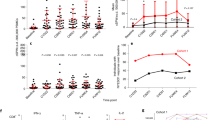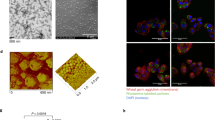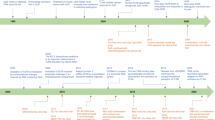Abstract
Toll-like receptors (TLRs) are a family of highly conserved germline-encoded pattern-recognition receptors that are essential for host immune responses. TLR ligands represent a promising class of immunotherapeutics or vaccine adjuvants with the potential to generate an effective antitumor immune response. The TLR7/8 agonists have aroused interest because they not only activate antigen-presenting cells but also promote activation of T and natural killer (NK) cells. However, the exact mechanism by which stimulation of these TLRs promotes immune responses remains unclear, and different TLR7/8 agonists have been found to induce different responses. In this study, we demonstrate that both gardiquimod and imiquimod promote the proliferation of murine splenocytes, stimulate the activation of splenic T, NK and natural killer T (NKT) cells, increase the cytolytic activity of splenocytes against B16 and MCA-38 tumor cell lines, and enhance the expression of costimulatory molecules and IL-12 by macrophages and bone marrow-derived dendritic cells (DCs). In a murine model, both agonists improved the antitumor effects of tumor lysate-loaded DCs, resulting in delayed growth of subcutaneous B16 melanoma tumors and suppression of pulmonary metastasis. Further, we found that gardiquimod demonstrated more potent antitumor activity than imiquimod. These results suggest that TLR7/8 agonists may serve as potent innate and adaptive immune response modifiers in tumor therapy. More importantly, they can be used as vaccine adjuvants to potentiate the efficiency of DC-based tumor immunotherapy.
This is a preview of subscription content, access via your institution
Access options
Subscribe to this journal
Receive 12 digital issues and online access to articles
$119.00 per year
only $9.92 per issue
Buy this article
- Purchase on Springer Link
- Instant access to full article PDF
Prices may be subject to local taxes which are calculated during checkout






Similar content being viewed by others
References
Janeway CA Jr, Medzhitov R . Innate immune recognition. Annu Rev Immunol 2002; 20: 197–216.
Uematsu S, Akira S . Toll-like receptors and innate immunity. J Mol Med 2006; 84: 712–725.
Kumagai Y, Takeuchi O, Akira S . Pathogen recognition by innate receptors. J Infect Chemother 2008; 14: 86–92.
Takeda K, Kaisho T, Akira . Toll-like receptors. Annu Rev Immunol 2003; 21: 335–376.
Heil F, Hemmi H, Hochrein F, Ampenberger F, Kirschning C, Akira S et al. Species-specific recognition of single-stranded RNA via Toll-like receptor 7 and 8. Science 2004; 303: 1526–1529.
Lund JM, Alexopoulou L, Sato A, Karow M, Adams NC, Gale NW et al. Recognition of single-stranded RNA viruses by Toll-like receptor 7. Proc Natl Acad Sci USA 2004; 101: 5598–5603.
Akira S, Uematsu S, Takeuchi O . Pathogen recognition and innate immunity. Cell 2006; 12: 4783–4801.
Wenzel J, Tormo D, Tüting T . Toll-like receptor-agonists in the treatment of skin cancer: history, current developments and future prospects. Hand Exp Pharmacol 2008; 183: 201–220.
Kaisho T, Akira S . Regulation of dendritic cell function through Toll-like receptors. Curr Mol Med 2003; 3: 373–385.
Sato A, Iwasaki A . Induction of antiviral immunity requires Toll-like receptor signaling in both stromal and dendritic cell compartments. Proc Natl Acad Sci USA 2004; 101: 16274–16279.
Beutner KR, Tyring SK, Trofatter KF Jr, Douglas JM Jr, Spruance S, Owens ML et al. Imiquimod, a patient-applied immune-response modifier for treatment of external genital warts. Antimicrob Agents Chemother 1998; 42: 789–794.
Craft N, Bruhn KW, Nguyen BD, Prins R, Lin JW, Liau LM et al. The TLR7 agonist imiquimod enhances the anti–melanoma effects of a recombinant Listeria monocytogenes vaccine. J Immunol 2005; 175: 1983–1990.
Smits EL, Ponsaerts P, Berneman ZN, van Tendeloo VF . The use of TLR7 and TLR8 ligands for the enhancement of cancer immunotherapy. Oncologist 2008; 13: 859–875.
Prins RM, Craft N, Bruhn KW, Khan-Farooqi HK, Koya RC, Stripecke R et al. The TLR-7 agonist, imiquimod, enhances dendritic cell survival and promotes tumor antigen-specific T cell priming: relation to central nervous system antitumor immunity. J Immnol 2006; 176: 157–163.
Stary G, Bangert C, Tauber M, Strohal R, Kopp T, Stingl G . Tumoricidal activity of TLR7/8-activated inflammatory dendritic cells. J Exp Med 2007; 204: 1441–1451.
Larangé A, Antonios D, Pallardy M, Kerdine-Römer S . TLR7 and TLR8 agonists trigger different signaling pathways for human dendritic cell maturation. J Leukoc Biol 2009; 85: 673–683.
Caron G, Duluc D, Frémaux I, Jeannin P, David C, Gascan H et al. Direct stimulation of human T cells via TLR5 and TLR7/8: flagellin and R-848 up-regulate proliferation and IFN-gamma production by memory CD4+ T cells. J Immunol 2005; 175: 1551–1557.
Huang SJ, Hijnen D, Murphy GF, Kupper TS, Calarese AW, Mollet IG et al. Imiquimod enhances IFN-gamma production and effector function of T cells infiltrating human squamous cell carcinomas of the skin. J Invest Dermatol 2009; 129: 2676–2685.
Hart OM, Athie-Morales V, O'Connor GM, Gardiner CM . TLR7/8-mediated activation of human NK cell results in accessory cell-dependent IFN-gamma production. J Immunol 2005; 175: 1636–1642.
Peng G, Guo Z, Kiniwa Y, Voo KS, Peng W, Fu T et al. Toll-like receptor 8-mediated reversal of CD4+ regulatory T cell function. Science 2005; 309: 1380–1384.
Schön M, Bong AB, Drewniok C, Herz J, Geilen CC, Reifenberger J et al. Tumor-selective induction of apoptosis and the small-molecule immune response modifier imiquimod. J Natl Cancer Inst 2003; 95: 1138–1149.
Schön MP, Wienrich BG, Drewniok C, Bong AB, Eberle J, Geilen CC et al. Death receptor-independent apoptosis in malignant melanoma induced by the small-molecule immune response modifier imiquimod. J Invest Dermatol 2004; 122: 1266–1276.
Marin-Esteban V, Abdul M, Charron D, Haziot A, Mooney N . Dendritic cells differentiated in the presence of a single-stranded viral RNA sequence conserved their ability to activate CD4 T lymphocytes but lose their capacity for Th1 polarization. Clin Vaccine Immunol 2008; 15: 954–962.
Hornung V, Rothenfusser S, Britsch S, Krug A, Jahrsdörfer B, Giese T et al. Quantitative expression of toll-like receptor 1–10 mRNA in cellular subsets of human peripheral blood mononuclear cells and sensitivity to CpG oligodeoxynucleotides. J Immunol 2002; 168: 4531–4537.
Tomai MA, Miller RL, Lipson KE, Kieper WC, Zarraga IE, Vasilakos JP . Resiquimod and other immune response modifiers as vaccine adjuvants. Expert Rev Vaccines 2007; 6: 835–847.
Dumitru CD, Antonysamy MA, Gorski KS, Johnson DD, Reddy LG, Lutterman JL et al. NK1.1+ cells mediate the antitumor effects of a dual Toll-like receptor 7/8 agonist in the disseminated B16-F10 melanoma model. Cancer Immunol Immunother 2009; 58: 575–587.
Acknowledgements
This work was supported by grants from the Natural Science Foundation of China (no. 90713033), the National 973 Basic Research Program of China (no. 2007CB815800) and the National 115 Key Project for HBV Research (no. 2008ZX10002-008).
Author information
Authors and Affiliations
Rights and permissions
About this article
Cite this article
Ma, F., Zhang, J., Zhang, J. et al. The TLR7 agonists imiquimod and gardiquimod improve DC-based immunotherapy for melanoma in mice. Cell Mol Immunol 7, 381–388 (2010). https://doi.org/10.1038/cmi.2010.30
Received:
Revised:
Accepted:
Published:
Issue Date:
DOI: https://doi.org/10.1038/cmi.2010.30
Keywords
This article is cited by
-
Anti-EGFR bioengineered bacterial outer membrane vesicles as targeted immunotherapy candidate in triple-negative breast tumor murine model
Scientific Reports (2023)
-
Endothelial Caspase-8 prevents fatal necroptotic hemorrhage caused by commensal bacteria
Cell Death & Differentiation (2023)
-
Rescue of dendritic cells from glycolysis inhibition improves cancer immunotherapy in mice
Nature Communications (2023)
-
Therapeutic applications of toll-like receptors (TLRs) agonists in AML
Clinical and Translational Oncology (2022)
-
Friedel–Crafts chemistry 56*. Unprecedented construction of functionalized polycyclic quinolines via Friedel–Crafts cycliacylation and Beckmann rearrangement
Chemistry of Heterocyclic Compounds (2019)



